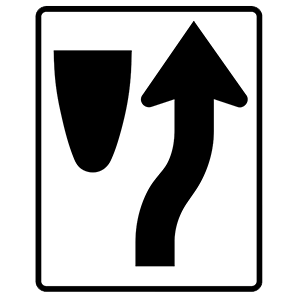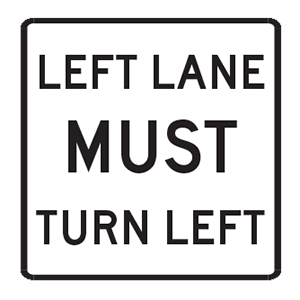2025 Indiana Permit Test 2
The following questions are from real DMV written tests. These are some of the actual permit questions you will face in Indiana. Each permit practice test question has three answer choices. Select one answer for each question and select "grade this section." You can find this button at the bottom of the drivers license quiz. For a complete list of questions and answers for Indiana please visit https://cheat-sheets.dmv-written-test.com/en/indiana/car.
Number of Tests
Number of Question
Passing Score
17. When turning or changing lanes, you must:
Explanation
Always signal your intentions when changing lanes, turning, or pulling away from a curb. Do not allow yourself to become lazy and form the bad habit of not following this law.
18. You are approaching a railroad crossing and you do not see or hear a train. You must stop:
Explanation
You must always stop before crossing railroad tracks if flashing red lights are activated, a crossing gate is lowered, a stop sign is posted, a flagger signals you to stop, or a train is visible or so close to the crossing that it would be hazardous to continue driving. If you are unsure if a train is too close for you to safely cross the tracks, stop. Never race a train.
19. To check your blind spot before changing lanes:
Explanation
To check your blind spot before changing lanes, you should look over your shoulder in the direction that you plan to move.
20. When approaching a steady red traffic light, drivers should:
Explanation
A steady red traffic light indicates that drivers must come to a complete stop. Driving through a red light is against the law and is extremely dangerous. Drivers may turn right on a steady red light if there is no sign prohibiting a turn on red.
21. This sign means:

Explanation
This sign indicates that you must keep to the right of the upcoming divider.
22. When driving on wet pavement, it's important to remember:
Explanation
Wet roadway surfaces can be dangerously slick, especially immediately following a rainfall. When you are driving on wet roads, your vehicle is traveling on a thin layer of oil, dirt, and water. Slow down when there is heavy rain, standing water, or slush on the road to reduce the risk of your wheels losing traction on the slick surface.
23. Alcohol causes:
Explanation
Consuming even a small amount of alcohol will impair your vision, judgment, concentration, and coordination.
24. You are driving on the roadway and hear a siren behind you. You should:
Explanation
When you hear the siren or see the flashing lights of an emergency vehicle coming from behind your vehicle, you must create a clear path for the emergency vehicle and stop. Reduce your speed and safely pull over to the side of the road. If the emergency vehicle is directly behind your vehicle when you are in heavy traffic, keep moving slowly until you can get out of its way.
25. What should you do when an emergency vehicle is approaching while displaying flashing red or blue lights?
Explanation
You must yield the right-of-way to all emergency vehicles using a siren, air horn, and/or flashing red, blue, or white lights. Where possible, you must pull over to the right edge of the road. If you are in an intersection, drive through the intersection before you pull over.
26. Braking distance is affected by:
Explanation
Factors that can affect braking distance include how fast your vehicle is traveling, the condition of your brakes and tires, and the condition of the pavement.
27. This sign means:

Explanation
